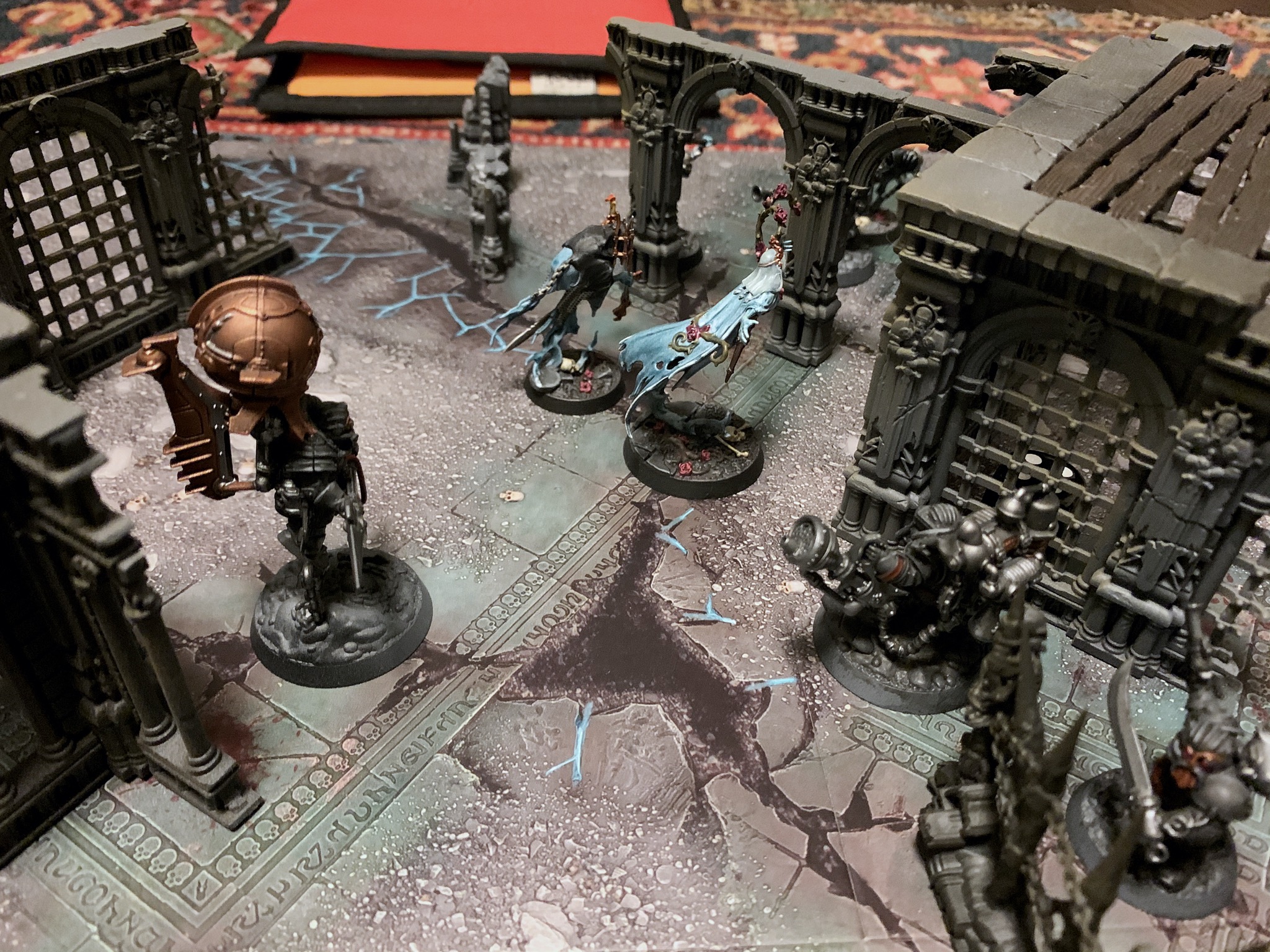Review: Song of Blades and Heroes
by Ramanan Sivaranjan on September 20, 2020
Tagged: wargame skirmish minis 28mm sobah

Played a game of Song of Blades and Heroes today because the D&D Encounters game I was expecting to play wasn’t starting till next week. It was the first war game I’ve played since high school. (And high school was a very long time ago now.) Skirmish games are fun. Tempted to get some miniatures. - Me, 25th October 2012, on G+ (RIP)
Many years ago I would attend D&D Encounters on the same night the Toronto Historical Wargaming Club would host their meet-ups. I would hang out and chat with the club members before and after my D&D games. On one such occasion I ended up playing A Song of Blades and Heroes, which was such a charming game I went out and grabbed the PDF. I never played again, but liked it so much I also bought the book in print a few years later. Fast forward a million years and I am stuck at home with a pretty healthy collection of painted minis. So, I decided to make war bands out of my Warhammer Underworld miniatures and play games: Ram vs. Ram.
A Song of Blades and Heroes by Andrea Sfiligoi is a dead simple skirmish game. You play battles between war bands comprised of about 5-15 miniatures. The game can be played quickly, something I never managed to accomplish playing Kill Team with Evan.
Units have two attributes: Quality and Combat. They may optionally have a few special traits that impact the rules, like “flying” or “savage”. Everything about a character is abstracted into these two attributes and these traits. Even different weapons are undifferentiated. People who like a lot of customization may find it a bit disappointing. I find it refreshing. Making your own units is easy. There is a simple point calculator online so you can make your own units that are balanced against everything in the book and everything else you might make. It’s remarkably easy to make units that feel the way you want them to feel.
The game has an unusual turn structure. On your turn you need to ‘activate’ a model to use it by rolling up to 3 dice. Each roll equal to or greater than the unit’s quality is a success, otherwise it’s a failure. Each success lets you perform an action with the unit: move, fight, etc. If you roll 2 failures you don’t get to activate any additional models and play flips to your opponent. You can obviously play it safe and only roll 1 dice, but you won’t accomplish much. It’s satisfying rolling 3 dice and getting those 3 successes; surprising when you roll snake eyes with your high quality unit.
This is (basically) all there is to the game: that simplicity!
Andrea has built many games on top of this chasis. There is a slightly more advanced version of a Song of Blades and Heroes, with a name you can likely guess, and then a million variations with names you likely can’t. His catalogue of games is all over the place. He’s an impressive and prolific game designer.
I love this game and I can’t recommend it enough, but I would be remiss if I didn’t spend a small amount of time moaning about the books frumpy layout and information design: it’s frumpy. I feel like a good editor and graphic design person could turn this book into something superlative. As it stands, it gets the job done.
Anyway, I am reviewing the game not the book. The game is fucking great. If you are interested in miniature war games this is the one to grab.
